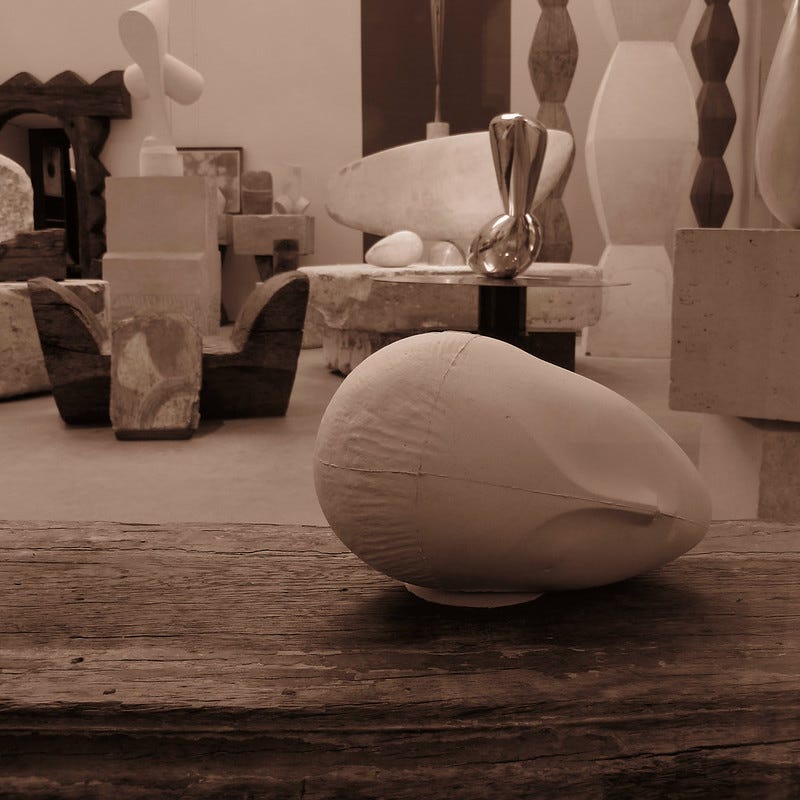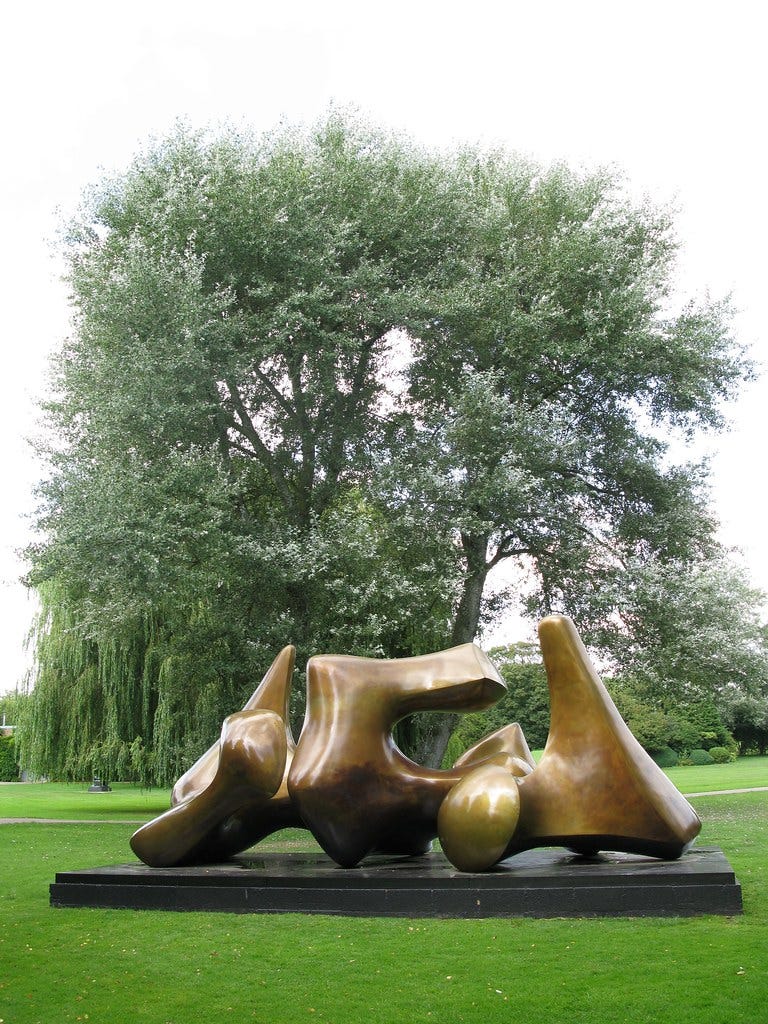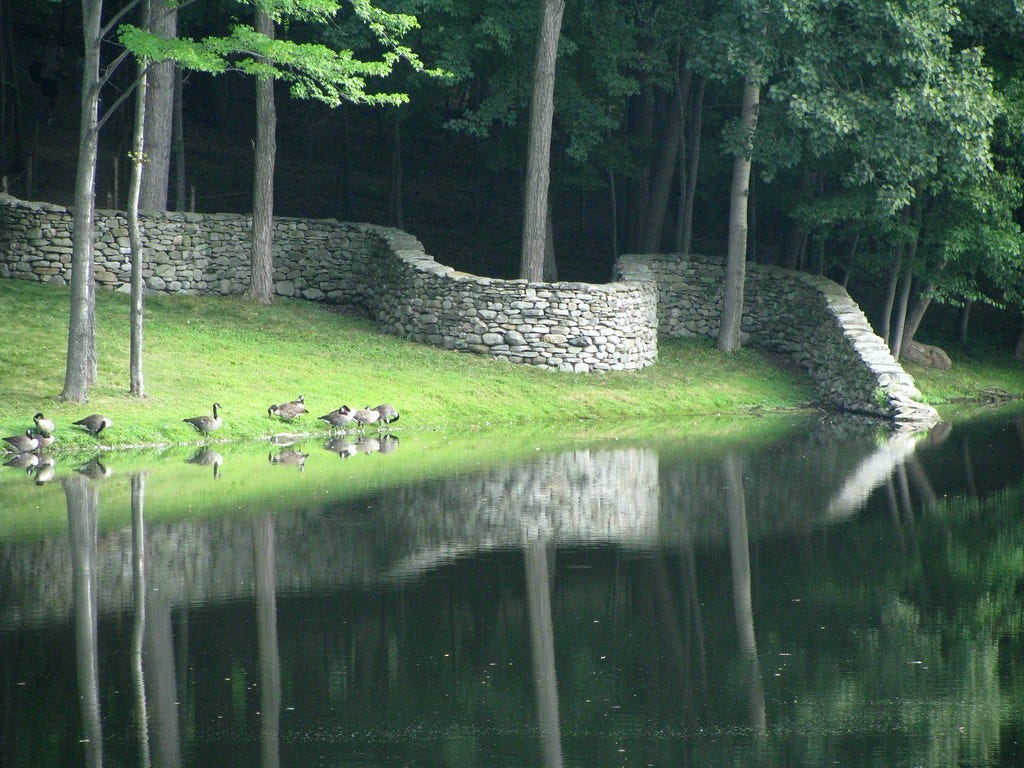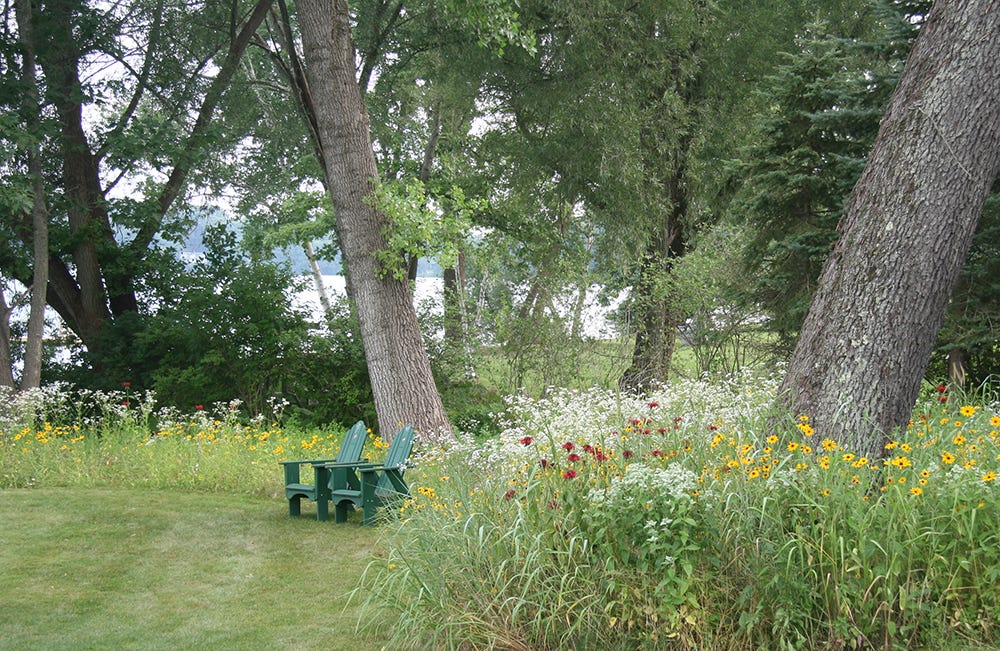Truth to Place
Romanian sculptor Constantin Brâncuși pioneered the practice of direct carving. The SOP of the time – the early 1900s – was to use clay models and plaster molds to create pre-determined forms that, when finished, seemed to transform their original materials into something else entirely. Marble became smooth skin or draping silk, for example. In contrast, Brâncuși applied his tools directly to his chosen materials: typically wood, stone or bronze. He believed it was a sculptor’s responsibility to respect and reveal the intrinsic properties of the media, such as veins in stone or grain and burls in wood, and to let those characteristics shape and be highlighted in the finished piece. He felt the form of a piece should come from within the material itself. In his words, “Matter must continue its natural life when modified by the hand of the sculptor.” He called this ethic “truth to materials.”

Henry Moore and Barbara Hepworth took inspiration from Brâncuși in their own work in the 1920s and 1930s. You’ve probably seen Moore’s massive reclining bronze figures in public plazas and museums around the world; he did pretty well for himself with commissions. I’d need the art historians among us to explain the evolution of Moore’s technique. I don’t believe he hewed to “direct carving” throughout his career, if ever. But he consistently maintained that his works should be “built on nature’s principles.”

Andy Goldsworthy, a contemporary sculptor, takes the ethic a step further by incorporating the elements of transition and time into his pieces.
“Movement, change, light, growth and decay are the lifeblood of nature, the energies that I try to tap through my work. I need the shock of touch, the resistance of place, materials and weather, the earth as my source. Nature is in a state of change and that change is the key to understanding. I want my art to be sensitive and alert to changes in material, season and weather. Each work grows, stays, decays. Process and decay are implicit. Transience in my work reflects what I find in nature.”
An example of Goldsworthy’s transient work is a spiral of icicle fragments encircling a tree trunk by a snowy river bank. The sculpture must have been stunning while it lasted, and the inevitable melting, collapse and return to the earth were intrinsic to the piece. (I'd show you a picture, but most of those truly evanescent works exist only in copyrighted images. As reviewed in this post, though, you can see some of them in films.) Goldsworthy says what drives him is an urge to genuinely understand the materials he’s working with.

I’ve been thinking about these concepts as I read Garden Revolution by Larry Weaner and Thomas Christopher. Weaner is a leading figure in sustainable landscape design. He’s known among the cognoscenti as Mr. Meadow.
Weaner argues that we should stop approaching landscape design as an exercise in imposing a man-made and static vision – however lovely – onto nature. We should resist the urge to convert a place to a mere reflection of our own tastes. Instead, he proposes treating our gardening as a collaboration with the local ecology and letting the landscape itself make many of the decisions.
What he means is that rather than picking plants solely for their ornamental value and then adapting the site to meet the potentially intensive and disparate needs of those species, we should let the site call the shots. He says, “match the plant to the site and not the site to the plant.” In other words, we should assess the ecoregion, habitat and niche of a space. Then we should figure out the naturally-occurring plant communities that thrive in those conditions – without depending on humans to keep them alive through constant tilling, irrigating, composting, fertilizing, weeding, trimming, pest management and other maintenance. It should come as no surprise that native plants best meet these criteria. In addition, Weaner advocates for building dormancy, death and succession into planning. As he puts it, we should be guiding natural processes rather than fighting them.
In this scenario, humans serve more as editors of their gardens than as authors. Weaner would caution that this doesn’t mean just letting go. Significant design, planning and strategy are still involved, but it’s done with the aim of respecting and revealing the intrinsic properties of the site, rather than transforming it into something different.
I hear echoes of Brâncuși, Moore, Hepworth and Goldsworthy in Weaner’s approach…what might be called an ethic of “truth to place.”
I can’t claim extensive experience in designing landscapes in either the conventional or the ecological ways. I'll go out on a limb, though, and suggest that, in return for a bigger up-front investment of thought and analysis, the ecological, truth-to-place approach yields abundant payoffs: lower maintenance demands over time, expanded habitat for wildlife, increased biodiversity, and a more resilient ecosystem, not to mention an ever-evolving parade of beauty.
Seems like an artful trade-off to me.
Resources:
Constantin Brâncuși, French-Romanian Sculptor and Photographer, The Art Story.
Henry Moore, British Sculptor, The Art Story.
Henry Moore: Sculptural Process and Public Identity, Tate.
Barbara Hepworth, British Sculptor, The Art Story.
Andy Goldsworthy, Living Your Wild Creativity.




